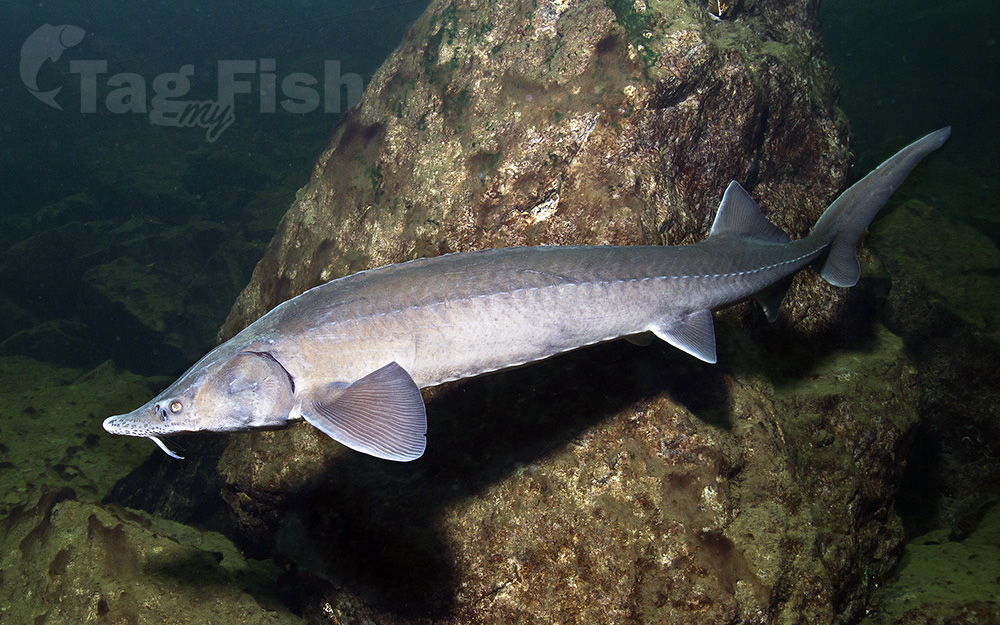Siberian sturgeon
(Acipenser baerii)

Classification
General data
The Siberian sturgeon (Acipenser baerii) is a species of sturgeon in the family Acipenseridae. It is most present in all of the major Siberian river basins that drain northward into the Kara, Laptev and East Siberian Seas, including the Ob, Yenisei (which drains Lake Baikal via the Angara River) Lena, and Kolyma Rivers. It is also found in Kazakhstan and China in the Irtysh River, a major tributary of the Ob. The species epithet honors the German Russian biologist Karl Ernst von Baer.
The subspecies A. b. baicalensis, known as the Baikal sturgeon, is a unique lake form found primarily in the northern end of Lake Baikal and migrates up the Selenga River to spawn.
Description
Siberian sturgeon usually weigh about 65 kg, with considerable variability between and within river basins. The maximum recorded weight was 210 kg. As with all other acipenserids, the Siberian sturgeon are long-lived (up to 60 years), and late to reach sexual maturity (males at 11–24 years, females at 20–28 years). They spawn in strong current main stem river channels over stone or gravel substrates.
The Siberian sturgeon feeds on a variety of benthic organisms, such as crustaceans and chironomid larvae.
The species had been in steep decline in its natural range due to habitat loss, degradation, and poaching. Up to 40% of the Siberian sturgeon spawning habitat has been made inaccessible by damming. High levels of pollution in certain places have led to significant negative impacts on the reproductive development of gonads.











